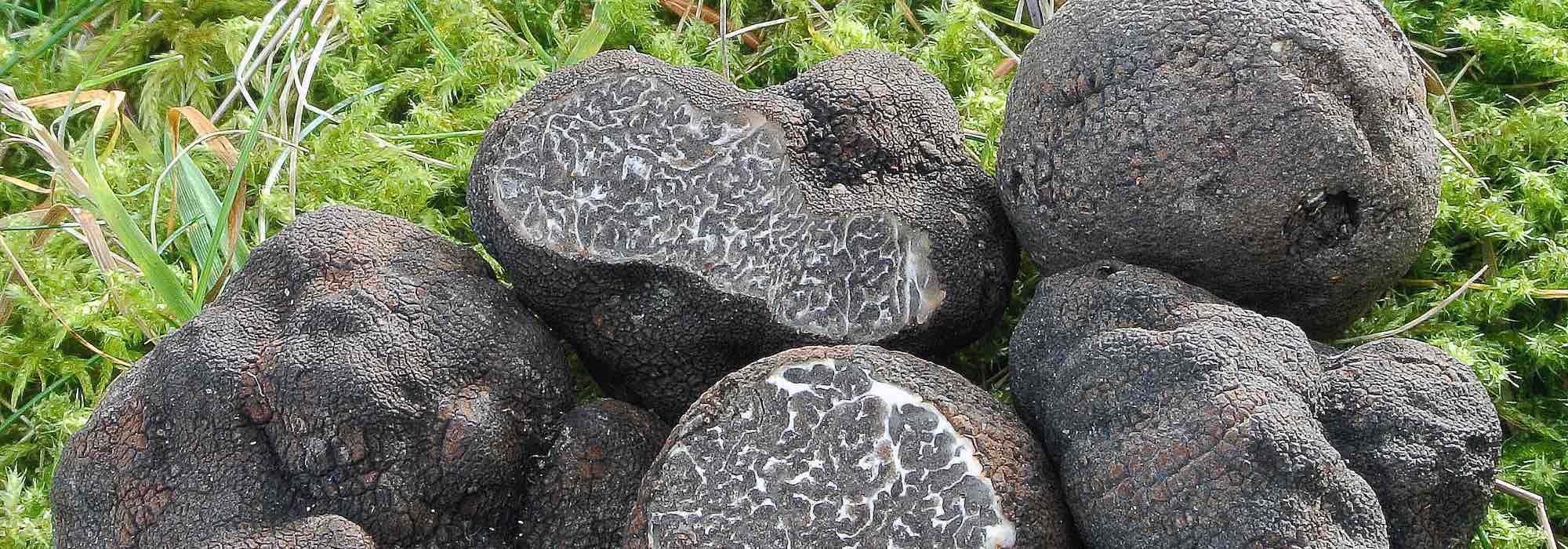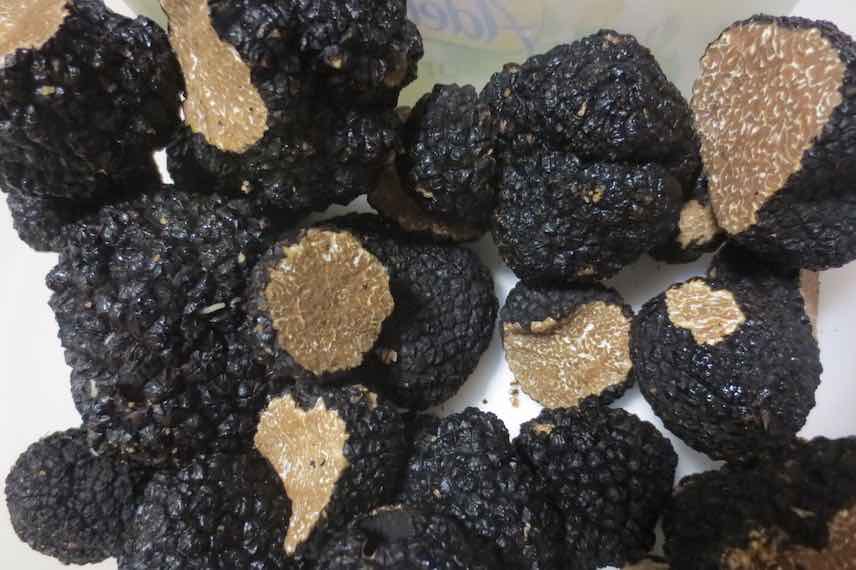
How to grow truffles in the garden?
A rare and precious mushroom that you can have at home.
Contents
The truffle, and more specifically the black truffle, is an extremely rare fungus, but also highly sought after in the field of gastronomy. Primarily grown in the south of France, Tuber Melanosporum is distinguished by its truly unique aroma and flavour. A true black diamond of cuisine, it comes in several varieties, each with different requirements in terms of climate and soil. In this sense, you can grow your own truffles in the garden if you live in a region with a suitable climate and follow these few tips.
Truffle, a delicate mushroom, quite complex, but not inaccessible!
Pour truffles to grow in a natural medium, it is essential that specific underground fungi form a symbiotic relationship with truffle trees. Numerous conditions must be met to find them, which is why the truffle is both the most complicated fungus to cultivate and the most sought after.
How do truffles form?
At the base of truffle trees, this fungus helps the tree absorb the nutrients it needs more effectively. At the same time, the tree provides all the conditions necessary for truffles to develop. Without this very specific and difficult-to-achieve symbiosis, one cannot expect to have truffles.
Thanks to this symbiosis, a mixed tissue forms at the roots, known as mycorrhiza: this occurs because the fungus’s mycelium reaches the tree’s roots. This mycorrhization can happen naturally, provided that all necessary conditions are met.
However, it is entirely possible to use techniques to mycorrhize a tree, in order to replicate and even accelerate what normally occurs in nature. To do this, one must grow a mycorrhized truffle tree, with roots already enveloped in truffle mycelium.

What are truffle trees?
The truffle oak is often mentioned, as it is one of the most well-known species in this field. However, some gardeners are not particularly keen, as an oak takes up space.
The hazel, lime, hornbeam, beech, and Aleppo pine are also compatible with truffle cultivation. Always ensure you choose a tree that is likely to thrive in your garden. Finally, truffles also have specific needs in terms of climate and soil, depending on the species.
Truffle species
- The black truffle of Périgord (Tuber melanosporum): Known as the black diamond. This species requires warmth and prefers calcareous soils (pH between 7.5 and 8.5);
- The winter or Alba white truffle (Tuber magnatum): This gastronomic jewel is nearly impossible to find in France; it is the most expensive and sought-after truffle. It is harvested in Piedmont, Italy. It grows in well-drained, light soil that does not dry out in summer.
- The Burgundy truffle (Tuber uncinatum): Less demanding and the most widespread, this truffle with a suave and pronounced aroma thrives in all types of calcareous soils (pH between 7 and 8), even clayey ones.
- The summer white truffle (Tuber aestivum): It grows in the same type of soil as black truffles but is harvested in summer. It cannot tolerate excess moisture or prolonged drought. With a subtle and light taste, this truffle is exclusively consumed raw and grated, as its aroma disappears when cooked.
Growing Truffles in the Garden: What Conditions Are Needed?
Truffle cultivation may not seem straightforward at first, but it is possible to achieve a good harvest by taking the time to carefully consider the best strategic choices and providing the plant species with all the care they need.
Necessary Conditions for Obtaining Truffles
Truffles require a true contrast between the seasons to develop properly. In this sense, they are not compatible with particularly temperate climates, such as those found along the Atlantic coast, for example. Furthermore, they should not be subjected to excessive temperature or rainfall, which excludes areas close to the Mediterranean Sea, territories with a continental climate, and mountainous regions.
 Burgundy Truffles
Burgundy Truffles
Ideally, truffles are cultivated around the Loire, both north and south of the river, where the seasons are distinct, but without extremes. You can also adapt your choice of species based on your local area. For example, the black truffle of Périgord (Tuber melanosporum) requires a lot of sunlight, while the black truffle of Burgundy (Tuber magnatum) is less demanding. The latter is, in fact, the most widespread.
The Soil Required for Truffles
Truffles thrive in calcareous, well-drained soils.
How to Create Truffle Mycelium?
It is possible to inoculate your soil. To do this, dig a hole about twenty centimetres deep, close to the roots of a truffle tree, and then fill the hole with compost.
How to have a truffle orchard at home?
The truffle grove will allow you to regularly harvest your own truffles, so you can cook them as you wish. If you have managed to plant a truffle tree and your soil is compatible with the requirements of this precious fungus, you just need to get started.
How to successfully plant a truffle tree?
You can plant your truffle trees between November and December or at the end of winter, in February or March. Make sure to properly drain the bottom of the hole by adding clay balls or gravel, unless you already have a stony terrain. You must not use potting soil, fertiliser, manure, or even compost – all these elements will hinder mycorrhization. After planting, water generously (about fifteen litres per planting). Ideally, the young plants should be placed in clusters of three.

You can plant an oak truffle tree, a lime tree, a poplar, or an Atlas cedar: several species are compatible, so take the time to research!
Patricia’s advice: Never dig the soil around your truffle trees, as you risk completely destroying the mycorrhizae. However, you can use a brush cutter to maintain the area. You must not use chemical plant protection products, to never disturb the natural processes that allow for truffles.
When to harvest truffles?
On average, you will have to wait between 4 and 7 years for your first truffles, which are harvested at various times depending on the species of truffle.
- The black truffle from Périgord: between early December and March;
- The white winter truffle or Alba truffle: between October and December;
- The grey truffle from Burgundy: between September and January;
- The white summer truffle: between May and September.
- Subscribe!
- Contents
































Comments